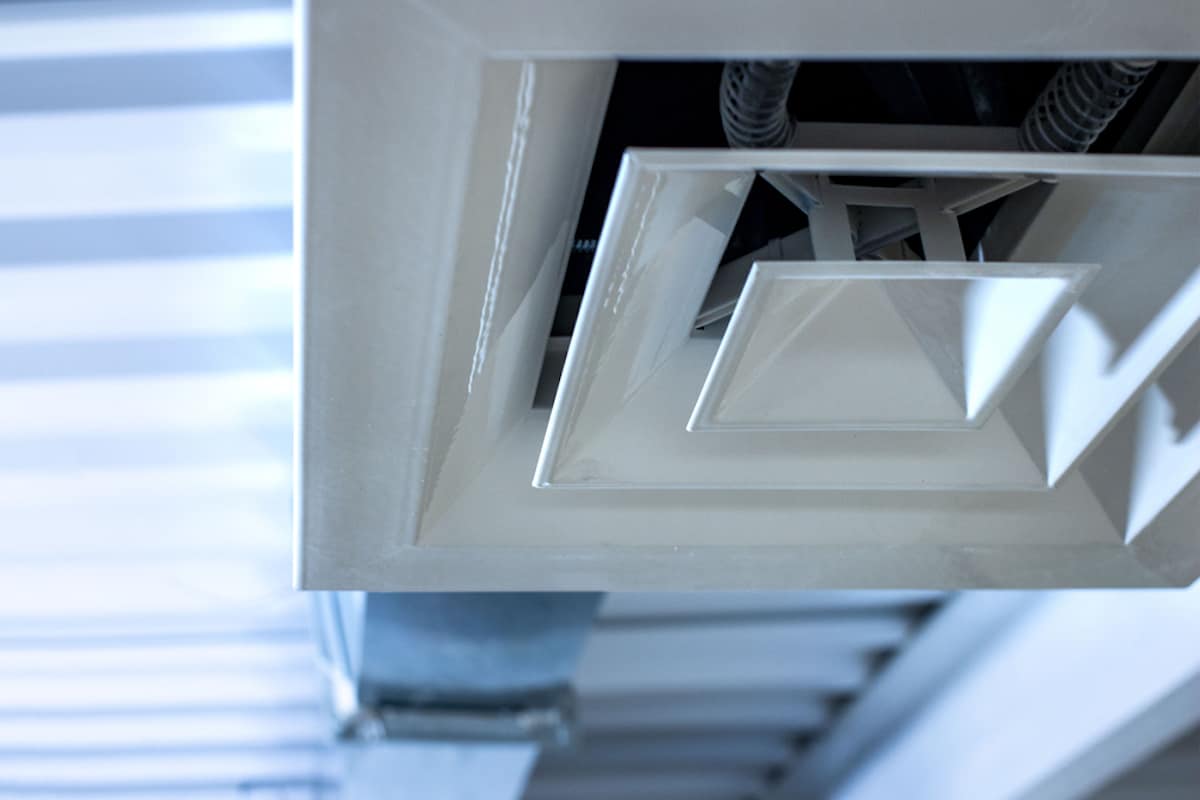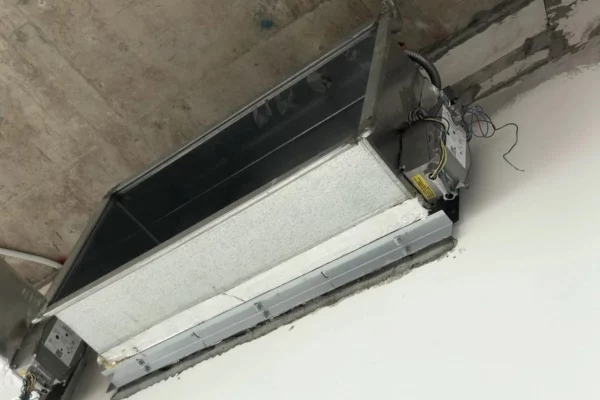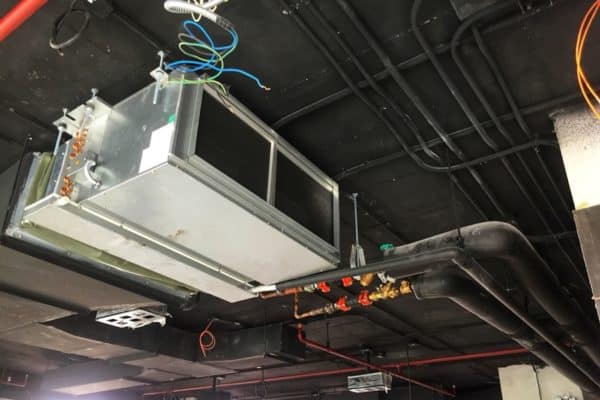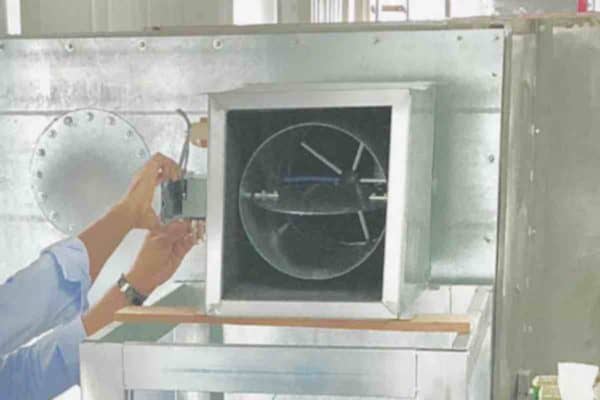HVAC Diffuser Sizing Guide: CFM Chart & Selection
Supply air diffusers are critical to HVAC air distribution system. Inappropriate supply air diffusers can cause the entire HVAC system to perform poorly. So, how do you size and select a supply air diffuser?
Generally, the size of HVAC diffusers should be based on an airflow of around 250 CFM and a noise level of below NC30. 2 ft length by 2 ft width and 8 inches inlet diameter is the most common size for a 4-way ceiling diffuser.
Unlike return air grilles, the size of supply air diffusers is not determined by a formula. Instead, we need to go through a process to find the most suitable supply air diffusers.
Since 4-way diffusers and linear diffusers are the two most common types of supply air diffusers in HVAC, I’ll be using both of them as examples in this guide. If you want to see what other diffuser types available, check out my post about the 6 different types of supply air diffusers..
HVAC Diffuser CFM Chart
Different sizes of HVAC diffusers can be used for the same airflow depending on the diffuser type. To give you a quick solution, below is the common diffuser sizes and their corresponded airflow.
| Airflow | Diffuser Size | Neck Size |
|---|---|---|
| 150 CFM | 2 ft x 2 ft | Ø8″ |
| 200 CFM | 2 ft x 2 ft | Ø8″ |
| 250 CFM | 2 ft x 2 ft | Ø10″ |
| 300 CFM | 2 ft x 2 ft | Ø10″ |
| 350 CFM | 2 ft x 2 ft | Ø12″ |
| 400 CFM | 2 ft x 2 ft | Ø12″ |
| 450 CFM | 2 ft x 2 ft | Ø14″ |
| 500 CFM | 2 ft x 2 ft | Ø14″ |
| Airflow | Diffuser Size | Neck Size |
|---|---|---|
| 50 CFM | 1-slot, 2 ft | Ø6″ |
| 100 CFM | 2-slot, 2 ft | Ø8″ |
| 150 CFM | 2-slot, 4 ft | Ø8″ |
| 200 CFM | 2-slot, 4 ft | Ø10″ |
| 250 CFM | 3-slot, 4 ft | Ø8″ |
| 300 CFM | 3-slot, 4 ft | Ø10″ |
| 350 CFM | 4-slot, 4 ft | Ø10″ |
| 400 CFM | 4-slot, 4 ft | Ø12″ |
How to Size a Supply Air Diffuser?
Before we can select the supply air diffuser, there are two things we need to size first; a) physical dimension and b) neck size.
Physical dimension is the length, width and height of a supply air diffuser. Meanwhile, the neck size of a supply diffuser is the size of the connection between the diffuser and the supply duct.
A) Physical Dimension
The physical dimension of 4-way diffusers and linear diffusers is very different. At the same time, their sizing process is also quite different.
4-Way Directional Ceiling Diffuser

4-way diffusers are available in a few standardized sizes. For instance, 290×290 mm, 370×370 mm and 595x595mm. Among all, 595x595mm and 603x603mm are the two most common ones.
If the ceiling is a 2×2 ft type, you are most likely going to end up using 4-way diffusers. However, you need to double confirm if the ceiling is measured in SI unit or Imperial unit.
Many times, people refer to a 2×2 ft ceiling as a two-by-two ceiling, regardless if the ceiling is actually measured in SI unit or Imperial unit.
But, you can’t follow them and proceed to order the two-by-two 4-way diffusers because there is a difference between using the SI unit or Imperial unit for HVAC supply air diffusers.
If the ceiling is measured in SI unit, you should order the 595x595mm size of 4-way diffusers. Conversely, if the ceiling is measured in Imperial unit, you should order the 603x603mm size of 4-way diffusers.
Otherwise, 603x603mm 4-way diffusers will not fit onto a ceiling that is measured in SI unit and vice versa. However, if you are dealing with plaster ceilings, it doesn’t matter if you are using SI unit or Imperial unit.
Linear Slot Diffuser
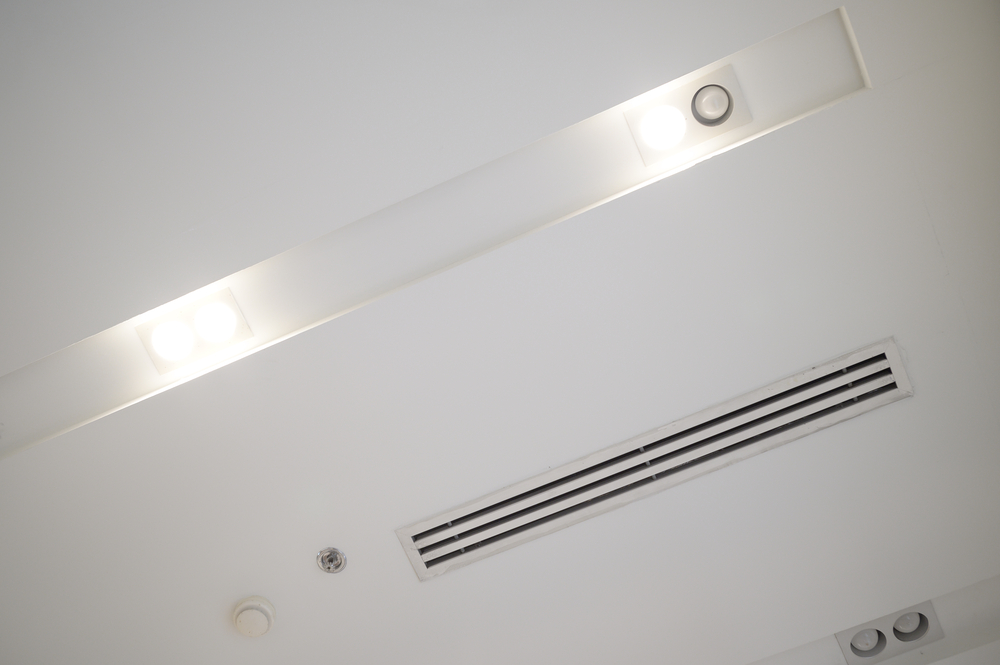
For linear diffusers, you are most likely going to decide between the diffuser length of 600mm or 1200mm. Also, you need to decide how many slots you need for the linear diffusers.
Generally, the longer the linear diffuser and with more slots, the linear diffuser can supply more air while remaining quiet. Nonetheless, 1200mm 3-slot linear diffusers are very common in commercial buildings while 600mm 2-slot linear diffusers are more common in high-end residential buildings.
The greater the number of slots, the wider the linear diffuser. As a general rule, one slot is equivalent to 50mm. Hence, you can expect a 3-slot linear diffuser to have a width of about 150mm.
Linear diffusers are not suitable for 2×2 ft ceilings. They are designed for plaster ceilings. Hence, the unit of measurement (SI or Imperial) doesn’t bother.
B) Neck Size
Neck size perhaps is the first key metric you need to decide and it is tricky. Regardless, the bigger the neck size, the more airflow a supply air diffuser can discharge without generating substantial noise.
However, the neck size of a supply air diffuser is limited by the size of the duct connecting to the supply air diffuser. The neck size of supply air diffusers is always 50mm less than the height of the associated duct.
For example, if you have a branch duct with a size of 400x300mm, you can’t connect it to a supply air diffuser with a neck size of 300mm in diameter because the height of the branch duct is only 300mm and there is not enough space to install a duct collar that is necessary for the connection.

Instead, the branch duct can only be connected to a supply air diffuser with a neck size of 250mm or below. However, if you can rotate the branch duct such that its width becomes 300mm and its height becomes 400mm, you can now use a supply air diffuser with a neck size of 300mm or even 350mm.
Nevertheless, some people compress the duct collar into an oval shape from 300mm to 250mm so that it can squeeze into the branch duct and fit the neck size. However, the connection may detach after some time due to the tendency of the oval-shape duct collar reverting back to a round shape.
Regardless, most supply air diffusers have a minimum neck size of 150mm and a maximum neck size of 350mm in diameter.
How to Select a Supply Air Diffuser?
Before we proceed to the step-by-step process on supply air diffuser selection, you need to get the performance datasheet from your preferred supply air diffuser manufacturer.
From there, we can select supply air diffusers based on the airflow, noise and throw requirements. Now, let’s go through the selection process.
1. Calculate the Required Number of Supply Air Diffuser
Generally, the airflow of a single supply air diffuser should be capped at 300 cfm. Personally, I like to use a maximum airflow of around 300 cfm for 4-way diffusers and 250 cfm for linear diffusers.
If I have a 12000 BTU fan coil unit (FCU) with an airflow of 400 CFM, I’ll go with two supply air diffusers with each diffuser supplying 200 CFM of airflow. However, it also depends on the ceiling space limitation.
Additionally, we also want to consider where to place the diffuser. If you would like to go into the detail about diffuser design and placement, consider my HVAC Beginner Course. It’ll provide you a complete set of basic HVAC design skills including diffuser design.
2. Select the Supply Air Diffuser
Now that we know two supply air diffusers are needed. Next, we need to determine the neck size of the supply air diffuser. In other words, we need to determine the connecting flexible duct size.
For this, we need to bring up the performance datasheet of the supply air diffuser. See the below example:
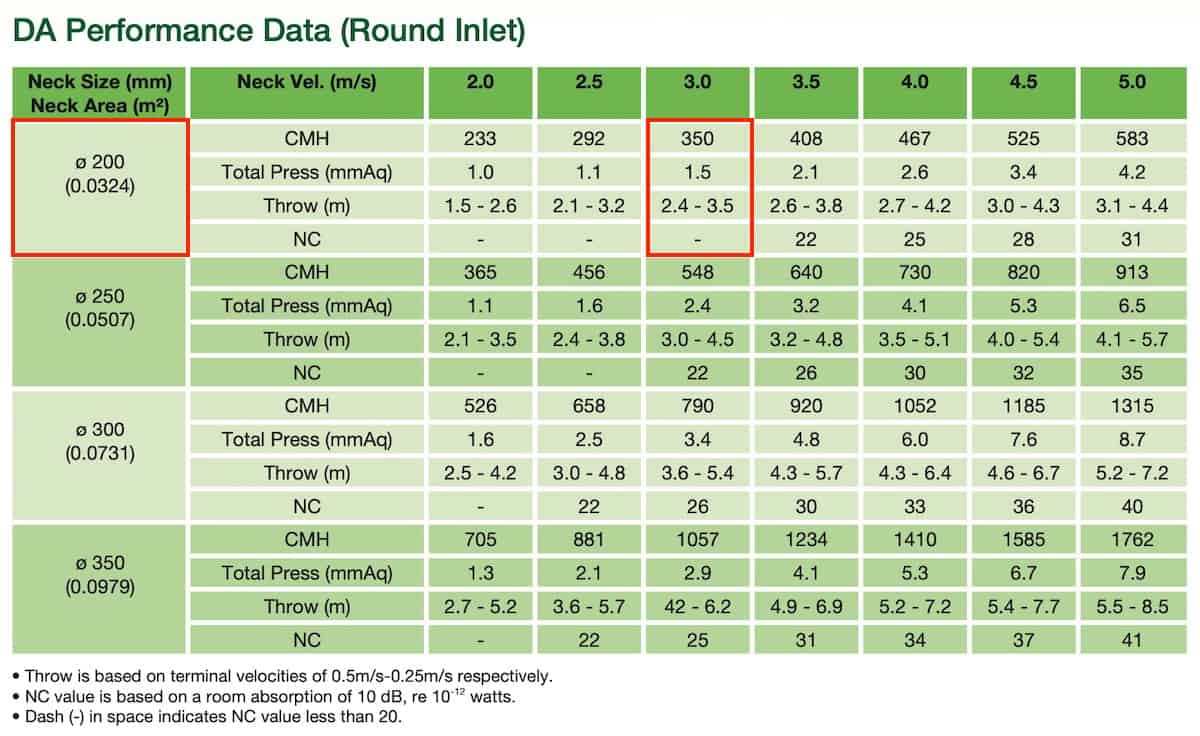
So, it seems like a neck size of 200mm diameter is sufficient for the two numbers of 200 CFM (340 CMH) 4-way diffusers.
Based on the performance data, at 350 CMH, the 4-way diffuser with a neck size of 200mm diameter can throw the air from 2.4 meters up to 3.5 meters which is excellent for a standard room.
Furthermore, it has an NC value of less than 20. In context, NC20 is similar to about 25 dB which sounds like a whisper in the ear. Since they are installed at the ceiling level, the noise is barely audible. Generally, we try not to go beyond NC30.
Now, for linear diffusers:
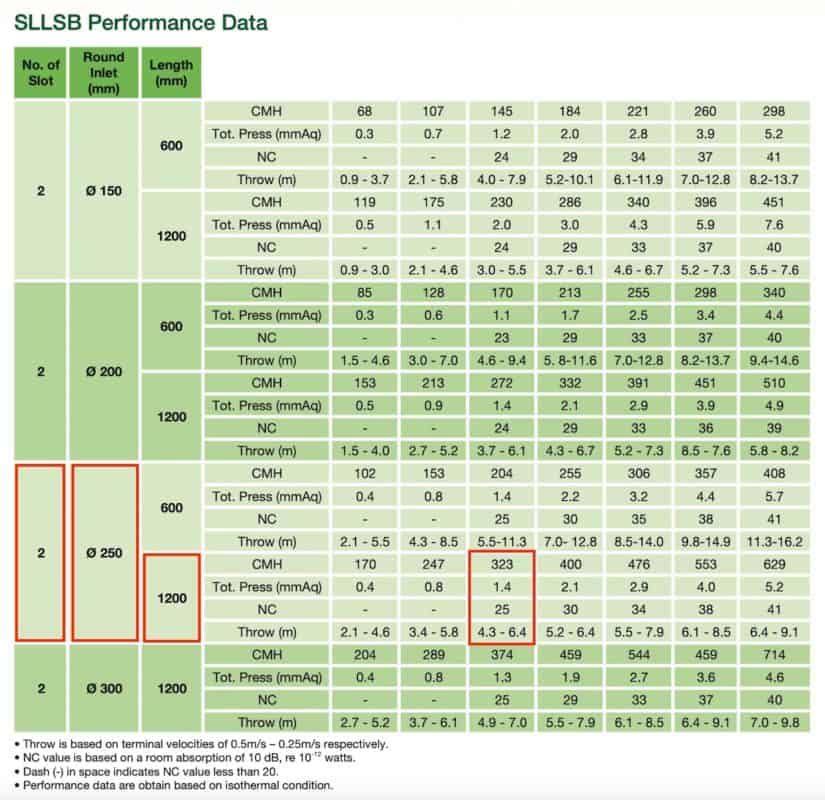
For linear diffusers, it seems like a 1200mm 2-slot linear diffuser with a neck size of 250mm diameter is good for 200 CFM (340 CMH).
Based on the performance data, at 323 CMH, the 1200mm 2-slot linear diffuser with a neck size of 250mm diameter can throw air from 4.3 meters to 6.4 meters which is acceptable but more suitable for high ceiling rooms.
Furthermore, it is expected to produce a sound level of NC25 which is equivalent to about 30 dB, slightly noisier than the 4-way diffusers we just selected. However, there is a second option that favors the overall cost.
Practical Selection of Linear Diffuser
If you look closely, we also can use a 1200mm 2-slot linear diffuser with a neck size of 150mm diameter for 200 CFM (340 CMH). Consequently, the noise level is higher.
However, the cost of the associated branch duct is lower.
The reason why the duct cost is lower is because the height of the duct is lower. If you calculate the duct size required for 200 CFM, one of the most cost-optimized duct sizes is 100x200mm.
The cost of a duct is heavily dependent on the total area of the duct. For instance, a 100x200mm duct at 1 meter length has an area of 0.6 m2. Meanwhile, a 100x300mm duct at 1 meter length has an area of 0.8m2.
As you can see, the 100x200mm duct is cheaper than the 100x300mm duct because it uses less material to make. Not to mention, the connecting flexible duct size is also smaller and thus, cheaper for the linear diffuser with a smaller neck size. I’ve covered this subject in my post about how to calculate duct size.
So, if we use 250mm diameter as the neck size for the linear diffuser, the cost of the duct is higher but the noise level is lower. Vice versa, if we use 150mm diameter as the neck size for the linear diffuser, the cost of the duct is lower but the noise level is higher.
Of course, the longer the linear diffuser, the more expensive it gets. Similarly, the greater the number of slots the linear diffuser has, the more expensive it gets.
However, there is a consensus on the number of slots of linear diffusers. Most of the time, if the room is small, people expect to see 2-slot or even 1-slot linear diffusers. If the room is medium-sized, 3-slot linear diffusers are most likely acceptable.
4-slot, 5-slot and 6-slot linear diffusers are usually selected based on the interior design. Some people feel uncomfortable when the linear diffusers have too many slots.
If you put a 4-slot linear diffuser in a small lift lobby, it kinda feels like you are doing it wrong or it is oversized regardless of whether the supply airflow is appropriate.
In houses like bungalows and mansions, homeowners tend to prefer 600mm long 2-slot linear diffusers. Hence, you may need to trim down the supply airflow to achieve low noise operation.
However, be careful not to end up with too many linear diffusers. Usually, a standard living room (350 sqft) is expected to have around 4-6 linear diffusers only. So, you can increase the duct height and use a bigger neck size to keep the number of linear diffusers under control.
3. Add Necessary Accessories to the Supply Air Diffuser
Once you’ve selected the supply air diffuser, you need to consider adding some accessories to the supply air diffuser as necessary.
Most of the time, a 4-way diffuser requires a square-to-round adapter that comes with a radial or crown damper. The adapter is a must for a flexible duct connection and the radial or crown damper is strongly recommended for air balancing or airflow control.
While you can use a volume control damper (VCD) to regulate the airflow at the branch duct, it is still necessary to have a damper at each diffuser for precise airflow control.
If you want to learn why dampers are necessary, I suggest you check out my post about air balancing tools and procedures.
For linear diffusers, you need to include a dedicated plenum box with a duct collar on the side for a flexible duct connection and an opposed-blade damper for airflow control as well. Take note that the duct collar is better to be on the side of the plenum box rather than on the top to avoid uncomfortable air throw.
Conclusion
To size a supply air diffuser, you need to be aware of the unit of measurement used, especially for 2×2 ft ceilings. Then, you need to calculate the required number of supply air diffusers before you proceed to determine the neck size, length, number of slots (linear diffuser), noise criterion and throw of the supply air diffuser.
For linear diffusers, the slot number is also determined by general consensus rather than technical requirements alone. Furthermore, you should keep in mind the cost of the duct when selecting the neck size of linear diffusers.
Lastly, some accessories are essential for supply air diffusers. So, consider adding them and make sure that they are installed so that you can balance the air for a better air conditioning experience.
If you still have trouble with supply air diffusers or general duct design, consider my Email Consultation service or even engage me to help you design a complete HVAC system with my Design & Layout Drawing service. I’ll help you finish up your HVAC design work in no time.
If you have anything to add (or ask) about this topic, leave a comment down below!


